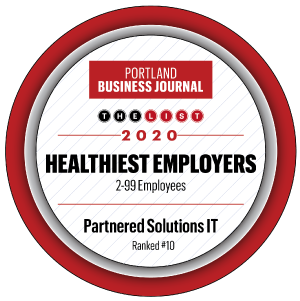
We here at Partnered Solutions IT, like many of you, are making adjustments to keep our own staff safe and healthy, working from home. Furthermore, we are also furiously working to keep our clients’ staff working as efficiently as possible. To that end, we have been implementing secure remote work access for our staff and for our clients. If you are thinking of, or already have remote work access in some fashion for your employees, there are precautions you should be considering to keep everything secure.
Determine the best configuration for your team.
The most secure way your team members can work from home is by connecting through a Virtual Private Network (VPN) tunnel, then connecting to and working on their computer on a Remote Desktop Protocol (RDP) session.
This allows your employees to functionally work at their workstation in the office, and keeps their work behind any security your network already has in place, like your firewall, intrusion detection system, and all of the security policies you’ve established. All server-related functions, such as accessing shared drives, or being able to download, save, edit and share files on your server can happen through the RDP session.
If your staff have work-issued laptops, all they need to access resources in your office is the VPN connection. We always recommend they save their work on a network share. It’s backed up, redundant, and way less susceptible to having coffee poured on it.
If your staff are using personal devices, you should take further precautions so that a personal computer does not compromise a company network. If possible, you should restrict access to only certain IP addresses and specific users. No matter what route your business decides to take, it is paramount that those home workstations are secure.
Keep your technology and your data safe.
More than 50% of personal devices are unprotected, lacking even basic antivirus protection software. Even after installation, it is important to make sure that antivirus protection is up-to-date to protect from the latest threats.
If you’re using wifi, it should be a password protected, encrypted connection. Your password should be strong (10 characters or more, the longer, the better). Don’t use a USB without clearing it with your IT team. Report suspicious emails—forward them to your IT team before you click any links.
Utilize videoconferencing tools like Zoom.
To stay connected with your team, and to be able to hold client meetings, you’ll want to enable videoconferencing for everyone. Many businesses use Zoom; there are a few other similar applications like GoToMeeting and Cisco WebEx, as well as free options like Google Hangouts, Skype, and Facetime. If you would like to know more, and/or receive a free consultation on the options available to your business, please don’t hesitate to ask. We’re here to help.







